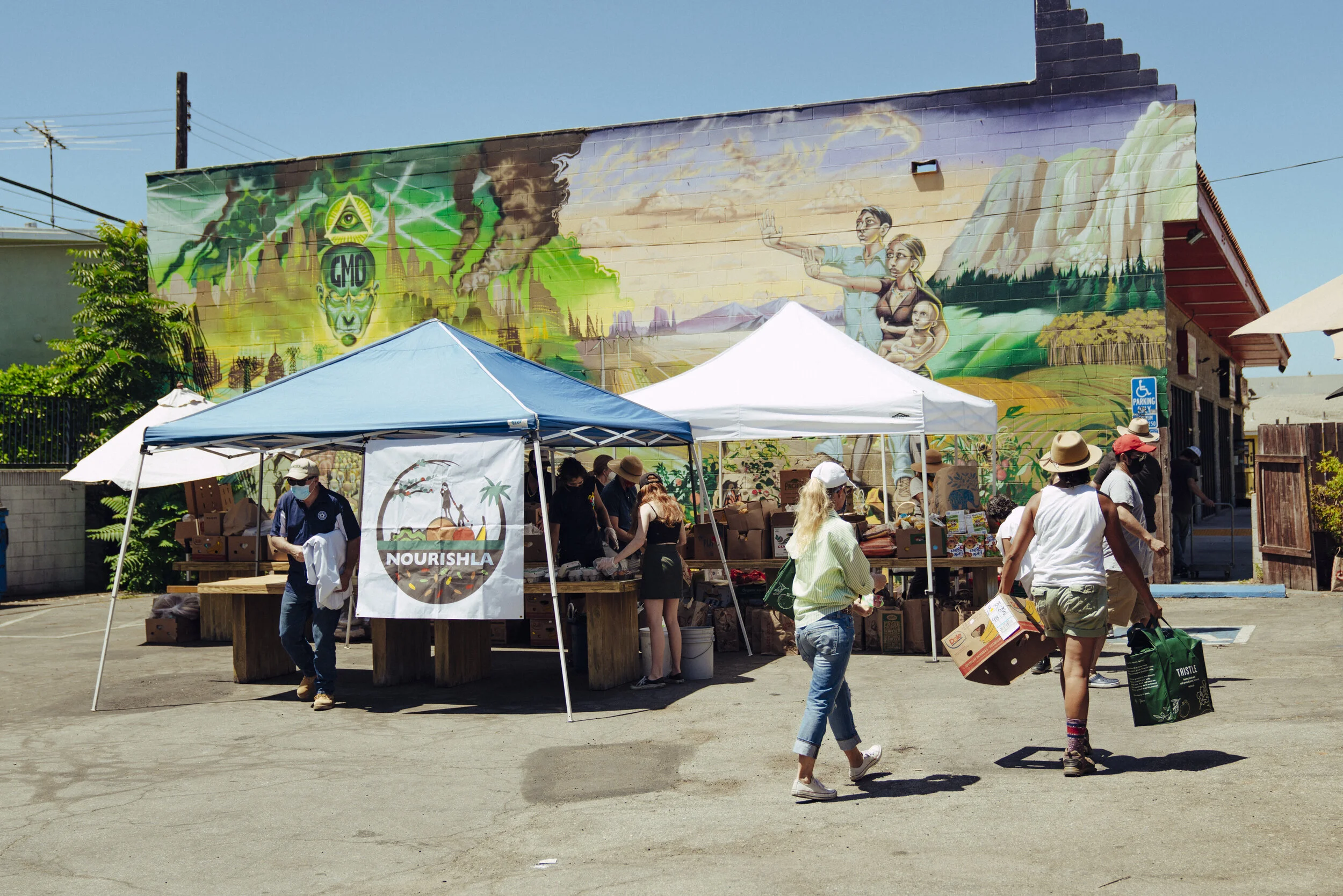Using Food
to Effect Change
FoodCycle LA’s mission is to address hunger in Los Angeles, but as executive director Nancy Beyda explains, its community-based efforts are also making a difference that goes above and beyond
Photographs and interview by RJ SHAUGHNESSY
RJ: Why is FoodCycle important right now?
Nancy: During the Covid-19 pandemic, food insecurity in the U.S. has been increasing dramatically, as more people struggle to get enough food for themselves and their families. FoodCycle has been working to support community-based efforts to help meet the increased need. We’re directing more food to neighborhood distributions. The food we supply is excess food that would be thrown away by businesses—maybe it’s slightly past the expiration date or ugly produce. Sometimes it’s hard to even know why it’s being tossed. In this country, an estimated 40% of food is thrown into landfills. Food thrown into landfills releases methane gas and is a major contributor to climate change. Methane gas is actually 20 times worse than carbon dioxide. It’s obvious that this food should be going to feed hungry people rather than thrown away, where it is damaging the environment.
RJ: How did you know that this was something you wanted to spend your time doing?
Nancy: When I first began picking up food almost 15 years ago, I was shocked to see the amount of food being wasted by just one grocery store. I could only imagine multiplying that across the U.S. I also saw what a difference the food made in the lives of women living in the shelter that we delivered it to. It was the main way that they were able to get healthy options onto the menu there. They were so grateful.
RJ: What is the greatest challenge for FoodCycle?
Nancy: One of our biggest challenges is simply getting businesses to understand that they should be donating any edible food that they have. There is a deep fear of liability—they will often say they’re afraid of getting sued—but there are lots of laws in the books that protect them from any possibility of a lawsuit. We have to work very hard just to get donors to give the food to us rather than throw it away.
RJ: What has been the most rewarding part about your experience at FoodCycle?
Nancy: Seeing the gratitude from the people we help. Sometimes they’re choosing between paying the rent and feeding their family. It’s so rewarding to help people who are struggling. It is also very meaningful to know that we’re doing something to help the environment.
RJ: Tell us a little bit about what we are seeing in these images—the different organizations and the people who run them.
Nancy: Since the beginning of the pandemic, we’ve been focusing on community-based distributions. We’ve added over 60 different organizations since March. The ones shown here are very diverse—from one started by an urban gardener that is now a drive-through distribution serving over a thousand families a week, to a smaller one in a Black neighborhood that incorporates advice about healthy food, yoga, and exercise. One of these distributions is working to help keep kids out of gangs in Compton. These are all examples of neighbors stepping up to help neighbors during hard times, and we’re proud to be able to support these amazing efforts.
RJ: How can readers of Gigantic help FoodCycle?
Nancy: They can go to our website to learn more about what we are doing to try to “Feed People—Not Landfills.” There, they can donate or volunteer. Anyone reading this can learn more about how food waste is driving climate change, and they can spread the message to others in their circle. There is absolutely no reason that edible food should be wasted while people are going hungry. That shows us that the problem of hunger is not due to scarcity—it is a failure of the imagination, and we can do better.






















